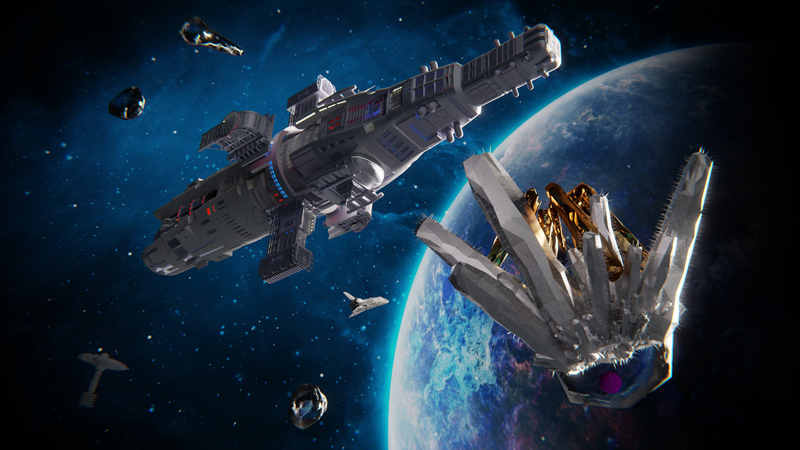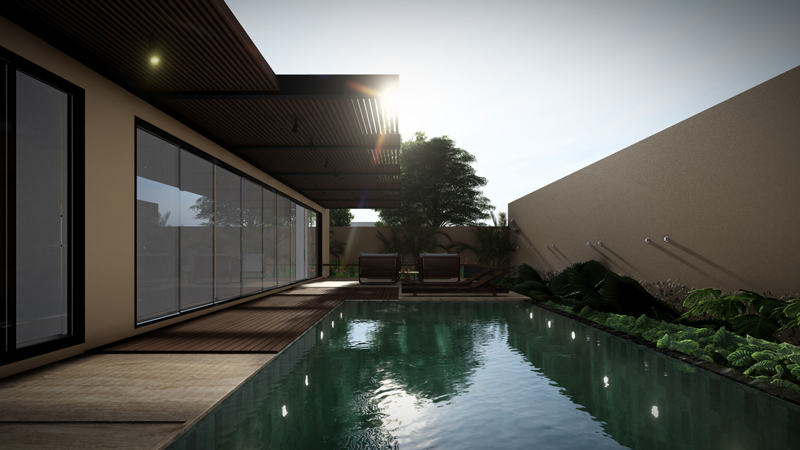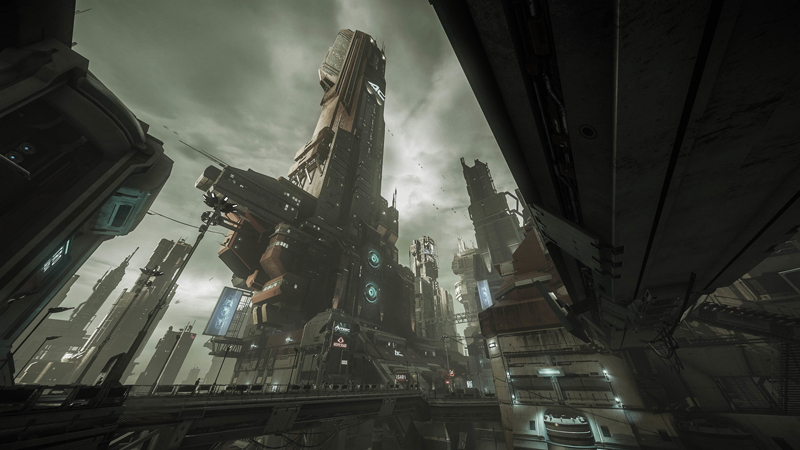3D rendering companies have a myriad of tools and software at their disposal. This means they can offer flexible 3D rendering services to their clients. A part of these tools includes 2D and 3D frameworks. Frameworks are a combination of programming languages, scripts, and commands that are used to create different objects, applications, and programs.
One of the most popular frameworks in existence is the Unity game engine. Unity is known as a cross-platform game engine. It is used by multiple industries and is currently supported on 25 different platforms. The primary use of Unity is to produce 2D, 3D, VR, AR, simulations, and rendering. Its original usage, however, has been eclipsed due to its immense popularity.
Unity is hugely popular with 3D rendering companies. The features of this fantastic framework are suitable for 3D rendering work. It is incredibly accessible and allows rendering companies to create superb images efficiently. In this article, we look at what makes Unity so popular with 3D rendering companies—we also look at the history of the framework and benefits it provides for CAD services professionals.
A Brief History of the Unity Game Engine

Unity was developed by Unity Technologies and initially released in 2005. To start, the game engine was exclusive to MAC OS. It soon became apparent, however, that it was exceedingly popular and is now available on all major OS including Windows and Linux.
Throughout its development, the framework has undergone many revisions and improvements. In the sections below, we first look at the history of both Unity Technologies and the Unity framework—this gives you a clearer idea of what it is and how it has developed since 2005.
Founding of Unity Technologies
Unity Technologies is the parent company that created the framework. Initially founded in 2004, the company was called Over the Edge Entertainment. This was changed to Unity Technologies in 2007.
To start, the company concentrated on game development with minimal success. They used their knowledge to create the Unity game engine. The desire to create Unity was due to the restrictiveness of the game development industry. They felt that development technologies should be widely accessible as opposed to individual companies using proprietary technology.
Once Apple released the first iPhone in 2007, Unity became the main development platform for mobile games. This continued for several years until other platforms got up to speed. The company continues to succeed and has acquired various subsidiary businesses to bolster its offerings.
Continued Success and Ground-Breaking Partnerships

Throughout its history, Unity has been used by a host of major software companies and game developers. This has been a key factor in its continued success and usage. Examples of essential partnerships and usage of the framework are listed below:
- Unity was the main framework for Apple iPhone game development
- Facebook created a development kit specifically for Unity in 2013
- Niantic created the hugely successful AR game, “Pokémon Go” using Unity in 2016
- Google worked with Unity Technologies to develop augmented reality technology in 2017
- Google Cloud worked with Unity Technologies to develop cloud gaming services
- DeepMind worked with Unity Technologies to create VR and AI technologies
As you can see, Unity has an impressive list of partners and clientele including Facebook, Apple, and Google.
Important Unity Milestones
- 2005 – Initial release of Unity game engine
- 2007 – Unity version 2.0 released
- 2010 – Unity version 3.0 released
- 2012 – Unity version 4.0 released
- 2013 – Facebook creates integrated development kit for Unity
- 2015 – Unity version 5.0 released
- 2017 – Version released changed to the year numbering system
- 2018 – Unity 2018 released
Unity Facts & Stats
To help you understand the scope and usage of this framework, we have listed some interesting stats and facts about Unity:
- 1+ billion unique devices have been reached by Unity programs & games
- 2.5+ billion games made with Unity have been downloaded
- 200k+ games have been produced with Unity
- As of 2018, it is estimated that 50% of mobiles games were created using Unity
It is clear that the usage of Unity is worldwide—its popularity is unrivaled. This extends to more than just mobile games, however. 3D rendering is a key offering of this framework, as you will see below.
Uses Outside of the Gaming Industry

We mentioned above that Unity is not just confined to the gaming industry. Originally, it was used for producing mobile games. It soon became apparent that the framework had great potential for other industries, however. The following are some other ways in which Unity is currently used:
- Film & TV
- Automotive Design Services
- Artificial Intelligence
- Architecture Design Services
- Engineering
In the automotive industry, Unity has been used firstly to create full-scale 3D replicas of new car designs. In addition to this, companies have also used it to plan and develop prototypes of complete production lines. The framework can be used to create 3D manufacturing environments complete with lighting and animation.
In architecture, Unity is often used instead of typical 3D rendering software. It offers immense scope and allows architectural 3D modeling services to design fully-fledged landscapes to house their building plans. This gives architects greater flexibility and helps them visualize how buildings are integrated into their surroundings.
Unity is used in a similar manner in the engineering industry. It offers engineers the ability to create 3D models of machines, individual parts, drafting services plans, and whole factory layouts.
What Is Unity?

So what is Unity? We have talked extensively about the history of the framework and the company behind it. But what is it used for and what features does it offer? The following are some basic features and information about Unity:
- Cross-platform game engine
- Can create 2D, 3D, VR, AR, simulations, and renderings
- Optimized terrain engine to create stunning 3D environments
- Ability to create detailed lights, shadows, and spotlights
- Importation of sprites
- Support for various mappings such as bump, reflection, parallax, and SSAO
- Detailed AI pathfinding tools
- Customizable user interfaces
- Import CAD assemblies
These are just a small portion of the features. The ability to import CAD assemblies is particularly interesting. This is partially why 3D rendering businesses use Unity—because it can be used in conjunction with CAD projects too.
Essentially, Unity is a framework from which developers can create virtually any type of 2D, 3D, VR, or AR product—from simple images and mobile games to complex 3D worlds.
What Platforms Is Unity Supported On?
One of the main benefits to companies offering 3D rendering services is that Unity is available on 25+ different platforms. By platforms, we mean things such as operating systems and specific devices or programs. We have created a comprehensive list of supported platforms below:
- Windows
- macOS
- iOS
- Android
- Tizen
- Linux
- WebGL
- PlayStation
- Xbox
- 3DS
- Oculus Rift
- Android TV
- Samsung Smart TV
- Facebook Gameroom
- Nintendo Switch
As you can see, this list is extensive, and there are some lesser-known platforms not included. Basically, Unity is available on mobile, TV, desktop computers, virtual reality, augmented reality, and game console devices—practically every form of digital device in existence.
This gives 3D rendering companies excellent control and flexibility. Moreover, it allows them to export renders to their clients in a myriad of different formats.
How Does Licensing for Unity Work?

Obviously, Unity has to be purchased if you want to develop using its framework. Initially, the framework could be brought outright as a one-off purchase fee—this gave unlimited usage and was available for any type of business. Today, there is a subscription model. This has several different levels depending on the size and scope of your business. Current plans are as follows:
Individual Usage
- Personal: Free for businesses with annual revenue of less than $100k
- Learn Premium: $10 p/month, which includes sessions with Unity instructors and other support materials
Business Usage
- Plus: $40 a month for businesses with annual revenue of less than $200k
- Pro: $150 a month for any business without limits
- Enterprise: Price available on request – this is for global businesses with high turnover
The different plans are straightforward. 3D rendering businesses would simply evaluate their requirements and look at what plan is suitable for their needs.
What Benefits does Unity Offer for 3D Rendering Companies?

So, now that you understand exactly what this framework has to offer, why is it so popular with 3D rendering companies? After all, 3D rendering companies have a plethora of software at their disposal such as Fusion360, SolidWorks design services, and CATIA. What makes Unity such a viable choice? The following are some of the main benefits this platform provides:
1. Based on C# Scripting Languages
Frameworks such as Unity are based on programming languages. These are the basic languages and codes that give frameworks their functionality and operations. Websites, for example, are largely written in HTML code. Unity is written in the C# programming language. This is known as a high-level language. The main benefit is that it is relatively easy to understand and get to grips with for beginners and inexperienced coders.
C# is based on the .NET framework and is similar to C++. 3D rendering businesses will not have to employ staff with specialist skills. This is because C# has a much more comfortable learning curve than other programming languages. Furthermore, there is an abundance of support material, tutorials, and guides available.
Unity is one of the best-documented frameworks on the web—advanced programming knowledge is not essential. Moreover, the C# community is generally helpful and willing to assist.
2. User-Friendly, Customizable Interface
Ease of use is another important factor when choosing 3D rendering software. If a framework or program is difficult to use, this can cause inefficiency and wasted opportunity. Rendering artists could spend weeks and months learning how to use a program when they could be working on important projects.
Unity is well-known for its ease of use and user-friendly interface. The interface is intuitive—tools and features are logically ordered and aligned. Everything flows naturally and in ways that you would expect.
Moreover, the tools are artist-friendly—designers can quickly utilize the immense array of features found in Unity with minimal effort. They don’t have to spend hours delving into sub-menus and folders to find what they are looking for. The workflow and interface are just efficient and straightforward—just what you need to quickly create beautiful 3D renders.
3. Superb Multi-Platform Support

We have touched on this benefit previously. Unity is supported on 25 different platforms—ranging from smartphones, tablets, desktop computers, and game consoles. This provides 3D rendering businesses with excellent opportunities and flexibility.
Historically, cross-platform compatibility of 3D rendering software has been minimal. Some rendering software uses proprietary file types and rendering formats. Furthermore, the software and files may only be viewed on specific devices. This obviously limits how businesses can share their designs and ideas with the end-client.
When using Unity, however, the opposite is true. Unity is supported on practically every type of digital device imaginable. It has wide-spread support and compatibility is generally not an issue.
Furthermore, viewing 3D renders created in Unity is relatively easy. This means that sharing work with clients and other departments within your business is straightforward. Ultimately, this leads to shorter project lead times and great design efficiency.
4. Stunning 2D and 3D Graphics Capabilities
Graphics are obviously one of the main considerations of 3D rendering. Would a business use a 3D rendering program if it provided pixelated graphics at low resolutions? Rendering software has to provide photorealistic graphics that look sublime. This is what clients want to see – they want beautiful images packed full of detail.
This is exactly what Unity provides. Just look at some of the games and apps that have been created using this framework—Monument Valley 2, Ori and the Blind Forest, Hearthstone, and Inside, for example, all feature gorgeous graphics and were developed in Unity.
3D rendering companies benefit from the exceptional graphics and advanced features the framework provides. It is possible to create realistic renders complete with a limitless array of bold colors.
5. Advanced, Lighting, Shading, and Textures
Aside from graphics, Unity also offers a multitude of additional graphic and atmospheric features that help designers add superb detail into their renders. The engine provides support for advanced lighting, shading, shadows, and textures. These features are what elevates a “good” 3D render into a work of art.
Lighting and shadows are essential for creating realism and showing depth in 3D renders. Unity allows the creation of natural and man-made light sources. These light sources create realistic shadows. Furthermore, shading and object textures give renders life and detail. Items such as wood grains, metal patterns, and fabric threads, for example, enhance simple objects.
6. Real-Time Live Editing

Rendering is often a time-consuming process. Creating complete frame-by-frame renders can take hours and require immense computing power. An advantage of Unity is that it allows for real-time editing. This is particularly useful for animation and game design, but it also improves the efficiency of 3D rendering house designs.
While rendering, designers can spot mistakes or improvements and adjust on the fly. This offers an unparalleled level of control and efficiency during the creation process.
7. A Huge Array of Rendering Tools
The basic Unity framework is packed with useful rendering tools. Designers have virtually unlimited creative license with what they can achieve. Examples of tools include event triggers, physics, lighting, and even animation.
You may not think so, but having the option to create animated 3D renders provides a host of additional utility. An architect, for example, could utilize animation to create a virtual guided tour of their new building design. Or an engineer could use animation to provide exploded views of their 3D machine renders.
Aside from the built-in tools, there is also a Unity store. This store is jam-packed with both official plugins and third-party developments. There are literally thousands of plugins and items to choose from, including libraries full of objects that can be incorporated into 3D renders such as furniture, accessories, and plant life.
This store gives 3D rendering companies even greater flexibility and allows them to maximize their creativity and innovation, ultimately improving their competitive advantage.
8. Affordable Pricing Plans
Finally, Unity is affordable. This is often one of the main considerations a company must factor in. There is no denying that some 3D rendering software is extremely expensive—thousands of dollars for just a single license. Unity is both accessible and affordable. As mentioned above, the 3D rendering price plans are reasonable—even the basic business package is just $40 per month.
If a 3D rendering company has a limited budget or is a new venture with minimal capital, Unity is an excellent affordable option.
As you can see, Unity is a superb framework with much potential. The combination of a fantastic interface, flexible C# programming language, cross-OS compatibility, and excellent graphics make this a brilliant choice for 3D rendering companies.
By using this engine, companies are given a mind-boggling array of features to play with. Furthermore, the framework has wide support and is used by millions of people around the world—it is, therefore, easy to translate and incorporate into other projects. If you need 3D rendering services, using a company that works with Unity could prove beneficial.
Cad Crowd’s 3D Rendering Freelancers Can Help You Make Your Project a Reality
Even if Unity has an amazing array of features, it may take a while for you to get a hang of them and develop the high-quality graphics that you wish to see. Cad Crowd’s pre-vetted and experienced freelance 3D rendering professionals can help you save the time and learning curve while you focus on other aspects of your project.
Take a look at how it works to learn more. You can also launch a design contest and get various design concept ideas from skilled designers from all over the world.
